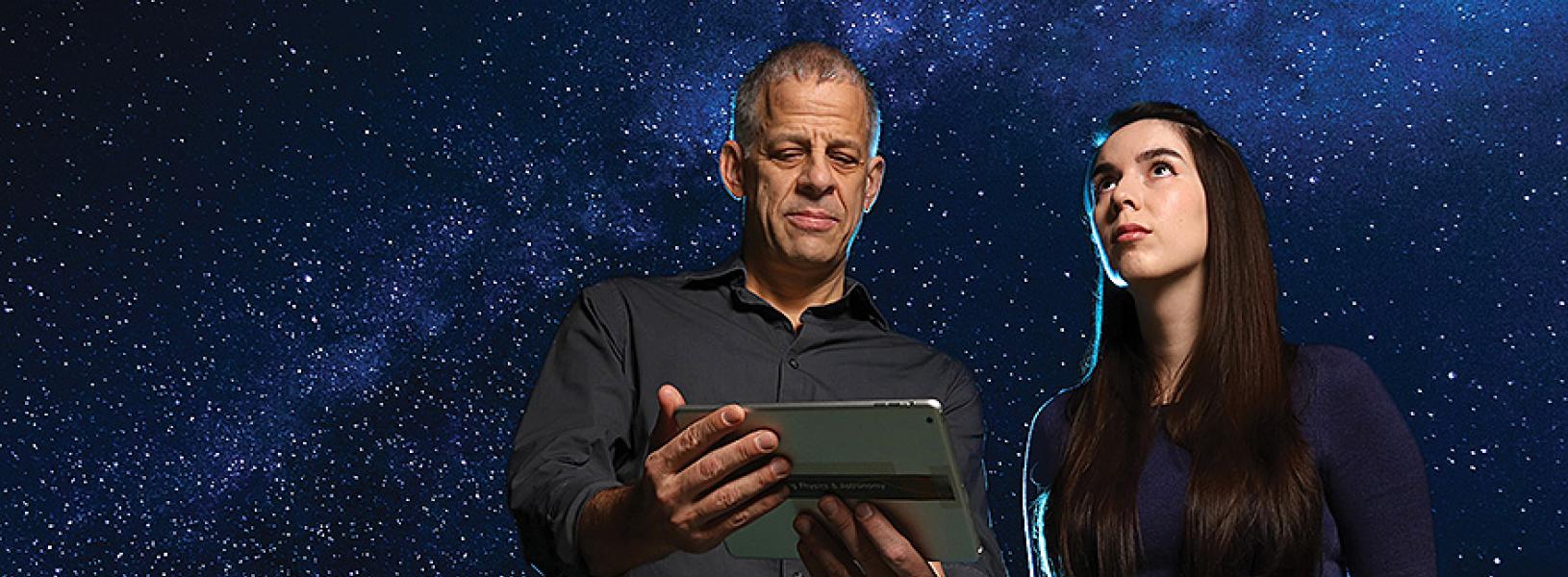With the world’s attention on Queen’s physicist Dr. Art McDonald after he received the Nobel Prize in Physics for breakthrough neutrino research, we decided to shine a spotlight on other innovative Queen’s physicists.
Professor Stéphane Courteau and PhD student Nathalie Ouellette are on the hunt for dark matter – not underground, but as astronomers, charting the distribution of mass throughout galaxies and clusters of galaxies.
“Just like planets move around the sun due to its mass, stars move within a galaxy due to its total mass – what you can’t see in brightness, is likely dark matter,” explains Ms. Ouellette, now in the final year of her PhD. “I look at how the stars are moving around the galaxy to see how the mass is distributed. I can see how the stars and dark matter play with each other to see how the galaxy is evolving.”
Stéphane Courteau and Nathalie Ouellette
Stéphane Courteau, Professor
Nathalie Ouellette, PhD student
Queen's Department of Physics, Engineering Physics & Astronomy
Stéphane Courteau: I am very much a classical astronomer, using ground-based telescopes. My long-term goal is to understand the evolution and structure of galaxies, particularly about how they are made and what they are made of.
Nathalie Ouellette: The Virgo cluster is the closest rich galaxy cluster to our Local Group, where the Milky Way and Andromeda are found. Thousands of galaxies are found in the cluster and I study their structure and composition at different wavelengths with spectroscopy.
Just like the planets move around the sun due to the sun’s mass, stars move within a galaxy due to the galaxy’s mass – what’s included in the galaxy’s mass, what you can’t see in brightness, is likely dark matter. I look at the motion of stars within each galaxy to see how the mass is distributed. I also get the stellar information, the brightness – I can see how the stars and dark matter play with each other to see how the galaxy is evolving.
I am creating this big database on the Virgo cluster – matching new data of ours with archival data. This will take us another step closer towards understanding how galaxies evolve.
Stéphane Courteau: Astronomy has really blossomed in recent years. Archival data are now available on the web for everyone to use. It’s a very democratic system where students can actually download information and write theses without necessarily having access to the latest instrumentation. Most new modern observatories archive their data that way.
The other way is to collect the data yourself – this is the classical way – but still, nowadays you don’t need to travel to the actual telescopes to get your data.
The data-taking methods are so computerized that you can actually control the telescope and collect the data from the comfort of your own office or home.
With the data all in place, then begins the excitement of trying to figure out what they mean!
For training purposes, I still try to bring students to the telescopes whenever I can. Nathalie and I have worked at observatories in Hawaii, Chile, New Mexico and Arizona.


